Understanding Brand vs Nonbrand Keywords: What You Need to Know as a Marketer
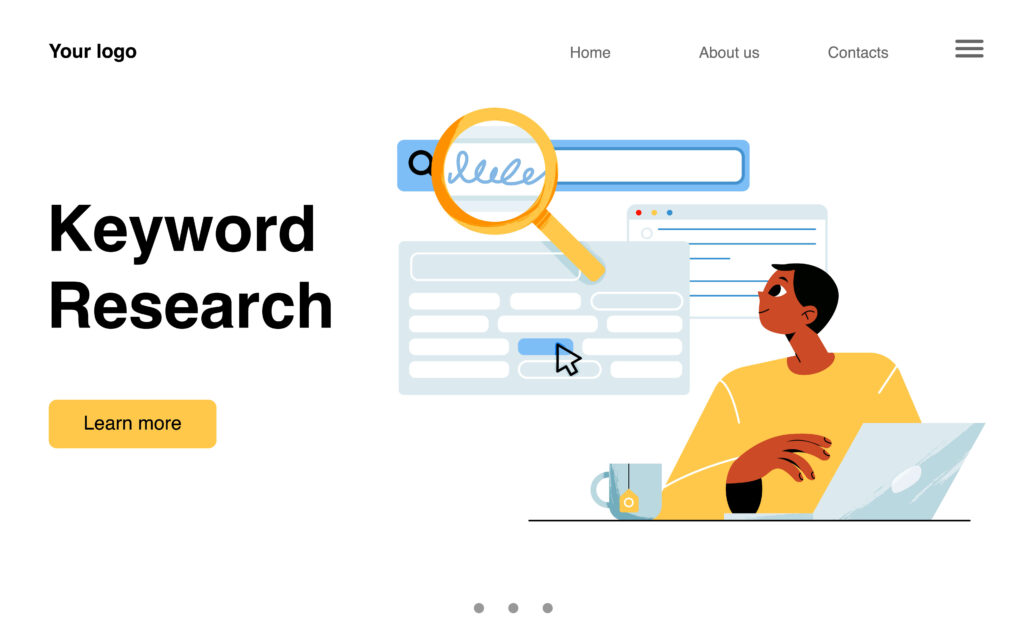
keywords are currency, but if you’re only targeting popular search terms without understanding the difference between brand and nonbrand keywords, you’re likely leaving money, and conversions on the table. Whether you run an e-commerce store, offer digital services, or work in-house for a growing startup, knowing how to balance these two keyword types can sharpen your marketing strategy and boost your ROI. At Dgazelle Digital Services, we help businesses decode SEO complexities like this every day. So let’s break it down. What Are Brand and Nonbrand Keywords? Brand Keywords: These include your business name, product names, or any phrase directly associated with your brand. Examples: “Nike running shoes”, “Dgazelle SEO services”, “Apple iPhone 15 Pro Max”. People searching these terms already know who you are. They’re warmer leads, closer to conversion, and usually searching with intent. Non- brand Keywords: These are generic terms not tied to your specific business but relate to what you offer. Examples: “best running shoes”, “SEO agency near me”, “digital marketing consultant” Nonbrand keywords target a colder audience, people who may not know you yet, but are in the market for what you offer. Why Does This Distinction Matter? Many businesses focus heavily on branded keywords in their campaigns, thinking, “Let’s rank for our name first.” That’s important, but it’s only one piece of the puzzle. Here’s what you’re missing if you ignore nonbrand keywords: Real-World Scenario: A Marketer’s Blindspot. Let’s say you’re the marketing manager of a growing skincare brand. You run Google Ads using only branded keywords like “Glow Skin Moisturizer” and “Glow Skin Nigeria.” Sure, your loyal customers find you, but new users looking for “best moisturizers for oily skin” won’t see your brand at all. You’ve just left a massive opportunity on the table. So Which Should You Focus On? The short answer? Both. But how you balance them depends on your goals. It’s not just about running ads, it’s about running the right ones.Let our digital marketing team at Dgazelle optimize your keyword strategy and get more ROI from your campaigns. Book a free consultation. Goal: Focus More On How to Optimize for Both 1. Create SEO Content That Targets Nonbrand Terms Write blogs, landing pages, and FAQs that answer what your ideal customer is Googling, before they know you exist. 2. Run Branded PPC Campaigns to Protect Your Space Competitors may bid on your name, especially if you’re gaining traction. Use branded ads to stay top of mind and defend your brand space. Bonus? Branded ads are cheaper and convert better. 3. Use Google Search Console to Monitor What People Actually Search You may be surprised how people are finding you. Are they using variations of your brand name? Misspellings? Track these, then add them as exact match or phrase match keywords in your campaigns. 4. Create a Balanced Keyword Strategy Think of your keywords in three layers: Brand keywords: To convert people already familiar with you. Nonbrand keywords: To attract new visitors. Hybrid keywords: Like “Dgazelle ecommerce SEO tips” these work well for content marketing and authority-building. How Dgazelle Can Help You Strike the Balance At Dgazelle Digital Services, we understand that successful digital marketing is more than picking a few keywords and hoping for clicks. We help service-based brands, coaches, consultants, e-commerce stores, and agencies: Whether you’re building from scratch or scaling your efforts, our strategy-first approach ensures your marketing dollars work harder. Final Thoughts: Play the Long Game In 2025 and beyond, the SEO game isn’t about gaming algorithms. It’s about serving humans. Branded keywords will always be your strongest signals of trust and loyalty. But nonbrand keywords are how strangers become customers. Want to maximize both? Let Dgazelle help you build an SEO strategy that balances discovery and dominance, because what good is a great brand if no one new ever sees it? Let Dgazelle help you strike the perfect balance between brand and nonbrand keywords that actually convert. Talk to a strategist today.
Paid Ads That Convert: How to Run Effective Digital Advertising Campaigns Without Wasting Your Budget in 2025

Digital advertising has become one of the most effective ways to rapidly grow a business. If you want to reach new audiences, drive targeted traffic to your website, or promote your products and services without the long wait of SEO, running online ads can be a game-changer. But how do you ensure your campaigns are effective and don’t waste money? This guide breaks down how to run high-performing digital ad campaigns across platforms like Google, Facebook, and Instagram, no fluff, just proven insights. What Are Online Ads and Why Are They Important? Online advertising refers to placing promotional content on digital platforms to reach potential customers. These include: Unlike organic marketing, these campaigns offer instant visibility, allowing brands to target specific audiences and track results in real time. Some benefits of digital advertising: …paid ads are your shortcut to faster ROI (return on investment). And when done with the right strategy, they don’t have to be expensive. It’s about working smarter, not just spending more. Why Ad Campaigns Often Underperform Many businesses struggle with digital ads because they: Without a clear strategy, it’s easy to spend heavily without seeing a return. Avoiding these mistakes is key to building successful, scalable advertising campaigns. Proven Strategies for High-Performing Digital Ad Campaigns Here’s how to structure an online advertising campaign that gets results: 1. Start With Market Research Before creating ads, understand your audience. What are their needs, habits, and pain points? Tools like Google Trends, Google Keyword Planner, Meta Audience Insights, and Ubersuggest can help uncover key behaviours and opportunities. 2. Craft High-Quality Ad Creatives Visuals and copy make or break your campaign. Focus on: For example, instead of saying “Buy our skincare kit,” use “Struggling with acne? Get visible results in just 7 days.” 3. Use Targeting Wisely On platforms like Meta Ads Manager or Google Ads, you can target users based on: Proper targeting ensures your ads are seen by people most likely to take action. 4. Test and Optimize Frequently A/B testing helps identify what works. Test different headlines, formats, images, and calls-to-action. Monitor performance with tools like Google Analytics, Facebook Pixel, or Hotjar to understand where to optimize. Focus on metrics like: Want to learn more about optimizing Facebook campaigns? Check out Meta Blueprint. 5. Set a Smart Budget You don’t need to spend big to get results. Begin with a manageable daily budget and increase it based on performance. Focus spending on high-performing ad sets and pause what’s underperforming. 6. Use Retargeting Only 2% of people convert on the first visit. Use retargeting ads to bring back visitors who didn’t take action the first time. This tactic is especially effective with abandoned cart campaigns, event reminders, or lead magnets. Top Platforms for Digital Advertising Image Source: Freepik Here’s a quick overview of where to run your campaigns: Common Myths About Online Advertising (Debunked) “Paid ads are too expensive.”Not true. When done right, even small budgets can bring great results. “I tried it once and it didn’t work.”Most likely, the strategy was off. It’s not about luck. It’s about testing and optimization. “My business isn’t big enough for ads.”Paid ads work for any size. Whether you’re selling a product, offering a service, or launching a course, paid ads can help you reach the right people. “Just boosting a post is enough.” Boosting is not the same as a full ad campaign with strategy and tracking. Combining Organic Marketing With Paid Ads Paid campaigns bring immediate traffic, while SEO and content marketing build long-term trust and authority. When used together: Think of SEO as the long game, and paid ads as your shortcut. Together, they create a full-funnel strategy that brings in traffic, nurtures leads, and drives conversions. Want Expert Help With Your Ad Campaigns? Running successful ad campaigns takes expertise, data, and continuous improvement. If you want to skip the guesswork and get real results, the team at Dgazelle Digital Agency can help. 👉 Book a Free Paid Ads Strategy Session to start growing your business with smart advertising.
Pillar Pages, What Is It And How To Use It
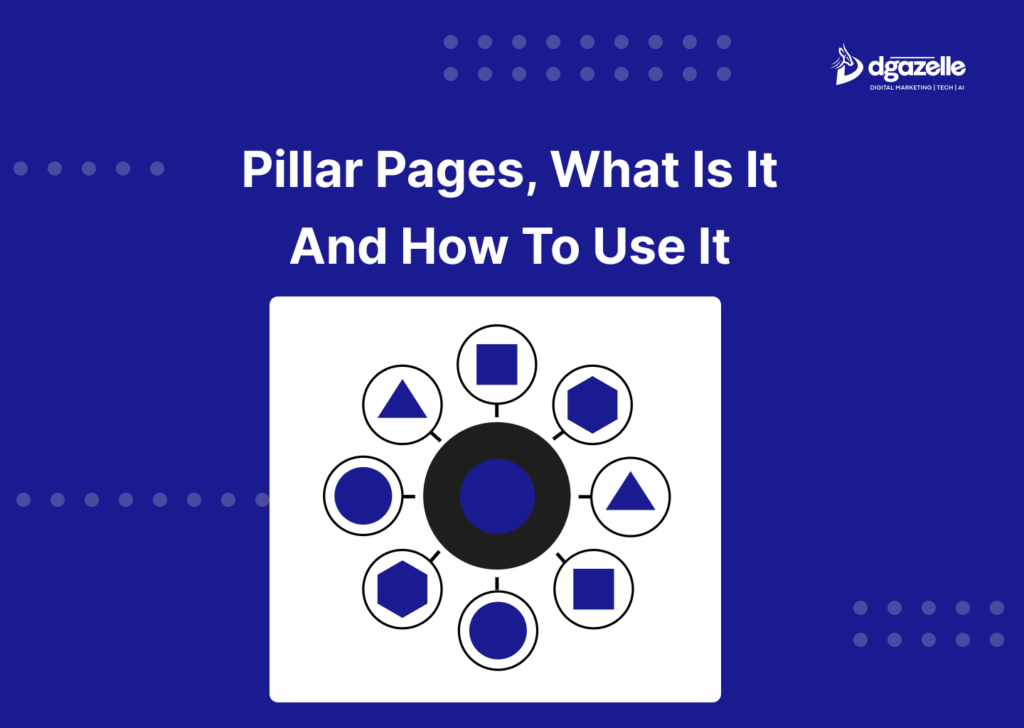
Ever felt lost in a sea of online content, struggling to find clear, structured information? That’s where pillar pages come in. A pillar page is a comprehensive, authoritative guide on a broad topic, serving as the foundation of a well-organized content strategy. It links to more specific, related content—known as topic clusters—making it easier for search engines to understand your site and for users to find exactly what they need. For Nigerian business owners looking to improve their website’s visibility and engagement, pillar pages can be game-changers. When done right, they can boost traffic, enhance user experience, and increase conversions. But if implemented poorly, they can actually harm your SEO. What Is a Pillar Page, Exactly? Think of a pillar page as the foundation of your content strategy, the main hub that connects and organizes related topics in a structured way. It’s a comprehensive guide that introduces key themes while linking to in-depth articles (topic clusters) for further exploration. More than just a content piece, a well-crafted pillar page enhances SEO by establishing context, relevance, and authority in search engines. When properly implemented, it boosts rankings, improves user experience, and keeps visitors engaged longer key factors for any Nigerian business looking to dominate its industry online. How Long Should a Pillar Page Be? Pillar pages are not your average blog post. They are in-depth, authoritative, and typically 2,000+ words long. But length isn’t the goal value is. These pages must cover a topic thoroughly, answering key questions while guiding users to more specific subtopics. However, a pillar page alone won’t cut it. Just like a bicycle’s wheels rely on spokes for stability, pillar pages draw their strength from supporting cluster content. Why Should You Use Pillar Pages? Pillar pages are essential because they make your website more organized, helping both search engines and users navigate your content seamlessly. A structured approach not only enhances the user experience but also improves your Google ranking. Google favors websites with logical hyperlink structures that clearly define content relationships. By strategically linking supporting articles to a central pillar, you signal relevance and expertise in your niche. Moreover, the more thoroughly you cover a topic, the stronger your authority. A well-executed pillar page positions your business as an industry leader, helping you attract and convert more customers online. How to Create an Effective Pillar Page Creating a pillar page isn’t just about writing, it’s about strategy. Here’s how to build one that ranks well and delivers value. Need help optimizing your website’s content structure? Dgazelle’s content experts craft high-ranking pillar pages that turn visitors into leads. Let’s build your authority! Step #1: Choose the Right Topics Start with keyword research. Tools like Ubersuggest, Google Trends, and AnswerThePublic help you find relevant topics and analyze competitor strategies. But don’t just rely on tools, listen to your audience. Use social media, surveys, and online forums to discover their biggest pain points and questions. Competitor analysis can also highlight content gaps, topics your competitors aren’t covering well, giving you an edge. Pro Tip: Refresh older content by turning it into a pillar page, expanding it with relevant subtopics for a stronger content structure. Lastly, stick with evergreen topics, ones that stay relevant long-term, so your effort keeps paying off. Step #2: Use Keyword Research to Organize Your Content Keyword research isn’t just about rankings—it’s about structuring your pillar page for clarity and relevance. Start by listing high-volume, business-relevant keywords using tools like Ubersuggest, Google Keyword Planner, or AnswerThePublic. Prioritize LSI (latent semantic indexing) keywords to improve search visibility. How Keywords Strengthen Your Pillar Page Take inspiration from Investopedia’s pillar page on home buying—it covers every angle, offers actionable steps, and links to supporting content. Want a powerful SEO strategy for your business? Dgazelle’s expert content team can structure your website for maximum visibility and engagement. Step #3: Create Your Pillar Page and Supporting Content Now that you’ve laid the groundwork, it’s time to build your pillar page and supporting content. Keep these best practices in mind: 1. Prioritize Quality and Readability Your pillar page isn’t just a content hub—it should be engaging and valuable on its own. Make it scannable with:Bulleted lists for key points, Short paragraphs to improve readability, Images and visuals to break up text, Logical structure with clear sections 2. Link Strategically 3. Follow Google’s E-E-A-T Principles Your content should reflect Experience, Expertise, Authoritativeness, and Trustworthiness to rank better and build credibility. Step #4: Build Backlinks to Your Pillar Pages You’ve created a solid pillar page, but your job isn’t done yet! Now, it’s time to amplify its reach through backlinks, one of the strongest SEO ranking factors. Start by auditing your current backlinks using Ubersuggest’s backlink checker to analyze the number of backlinks you already have, the domain authority of referring sites, and the spam score to avoid low-quality links. Once you have this data, focus on securing quality backlinks by reaching out to industry bloggers and relevant websites to feature your content, writing guest posts for high-authority websites with links back to your pillar page, and joining trusted business directories like Nigeria’s Chamber of Commerce. Conclusion A well-structured pillar page isn’t just a content piece, it’s a powerful SEO tool that enhances user experience, boosts authority, and strengthens link-building efforts. By organizing your content around pillar pages, you create a seamless navigation path for visitors while signaling relevance to search engines. This structure fills content gaps, improves engagement, and increases visibility in search results. Think of pillar pages as the backbone of your content strategy, the stronger they are, the more support they provide to your entire website. Ready to take your SEO game to the next level? Don’t just wait for customers to find you—put your brand in front of them! Let’s craft an outbound marketing strategy that drives results. Get a Free Strategy Session Today!
The SEO Blindspot Costing Nigerian Businesses Millions: Zero Click Searches
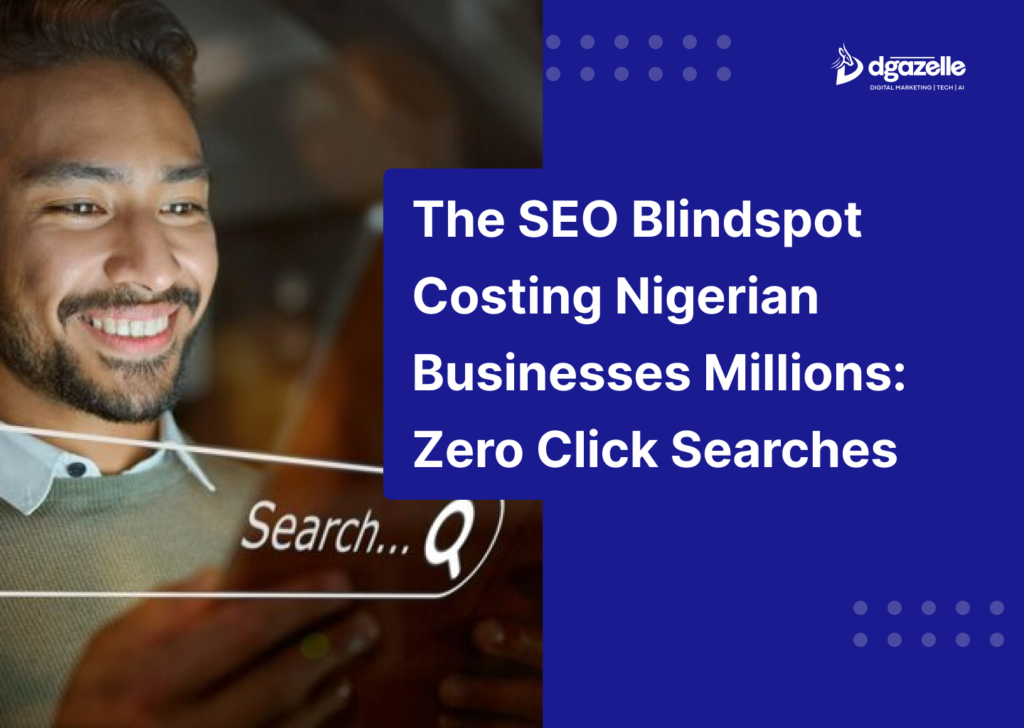
The way people search online is changing, and Nigerian businesses that rely on SEO to drive traffic and sales may be losing out—without even realizing it. The culprit? Zero click searches. Every day, millions of Nigerians turn to Google for answers. But instead of clicking on a website, they get their answers directly on the search engine results page (SERP) and move on. No website visits. No conversions. No sales. If your business depends on organic search traffic, this trend could be silently costing you leads and revenue. But the good news? With the right SEO strategy, you can turn zero click searches into an opportunity rather than a loss. What Are Zero Click Searches? Zero click searches happen when users find the information they need directly on Google’s SERP without clicking on any website. For example, if someone searches for today’s exchange rate or “best phones under ₦100,000,” Google might display the result instantly—pulling data from third-party sources. You’ve likely done this yourself when checking football scores, flight statuses, or definitions. While zero click searches improve user experience, they reduce website traffic—which means fewer potential customers, less ad revenue, and missed sales opportunities. And with 62.41% of searches now ending with zero clicks (up from 54.11% in 2017), businesses need to adapt fast. The big question is: How do you stop losing traffic to zero click searches—and turn them in your favor? But first why is it happening Why Zero Click Searches Are Growing Zero click searches aren’t just a passing trend—they’re becoming the new normal, and businesses that rely on organic traffic need to take action. A study by SparkToro’s Rand Fishkin, using Datos’s clickstream analysis, revealed that 58.5% of U.S. searches and 59.7% of European searches resulted in zero clicks. The same pattern is growing in Nigeria as search engines evolve. So, why are clicks declining? 1. Google’s Own Features Are Taking Over Google now answers most searches directly on the results page with AI Overviews, featured snippets, and knowledge panels. Instead of clicking on a website, users get instant responses—costing businesses valuable traffic. Beyond that, Google is sending more traffic to its own platforms, like: 2. People Are Searching Beyond Google Websites aren’t just competing with Google anymore. Consumers are finding content on: How Nigerian Businesses Can Win in the Age of Zero Click Searches How users find answers directly on search engine results pages (SERPs) without clicking through to a website—are changing the SEO procedure. Businesses must adapt by focusing on structured data, local search, and multi-platform visibility to maintain traffic and brand awareness. Zero click searches aren’t going away, but the right SEO strategy ensures your business still gets noticed and converts visitors into customers. Need an SEO strategy tailored to your business? Let’s talk! 1. Implement Schema Markup Schema markup is structured data that helps search engines and AI-driven models understand and display your content effectively. By implementing the right schema types, you improve your chances of appearing in zero click search results like featured snippets and product listings. Here are key schema types to prioritize: Using schema markup increases the likelihood of Google recognizing and surfacing your content in prominent SERP positions. 2. Strengthen Local SEO For businesses with a physical presence or service area, optimizing for local search is crucial. Local SEO strategies help brands appear in search features such as map packs, knowledge panels, and local featured snippets. Here are key actions to improve local search visibility: By focusing on local SEO, businesses can improve their chances of being featured in high-visibility SERP positions for location-based searches. 3. Track and Adjust Your SEO Strategy To measure the effectiveness of your zero click search strategy, continuous monitoring is essential. Rank tracking tools provide insights into performance, showing whether content adjustments are needed. Using a tool like Ubersuggest’s Rank Tracking, businesses can: If rankings decline or stagnate, revisiting content strategies—such as improving clarity, updating information, or adding structured data—can help regain visibility. 4. Expand Beyond Google with Search Everywhere Optimization Search behavior is evolving, with users increasingly seeking answers on multiple platforms beyond traditional search engines. To maintain visibility, businesses must optimize for different channels, including: By diversifying search presence, businesses can reach audiences across multiple platforms, reducing dependence on traditional organic search traffic. Conclusion: Future-Proof Your SEO with Smart Strategies As zero click searches continue to grow, businesses must embrace a multi-faceted SEO approach. Implementing structured data, optimizing for local search, tracking performance, and expanding search visibility across platforms will ensure continued success in an evolving digital world. By adapting to these changes now, businesses can maintain relevance, increase brand awareness, and drive meaningful engagement despite the shift in search behavior. Ready to drive more organic traffic? Dgazelle’s proven SEO strategies will improve your rankings and boost conversions. Let’s elevate your website today
What is SEO Crawl Budget And Why Is It Important
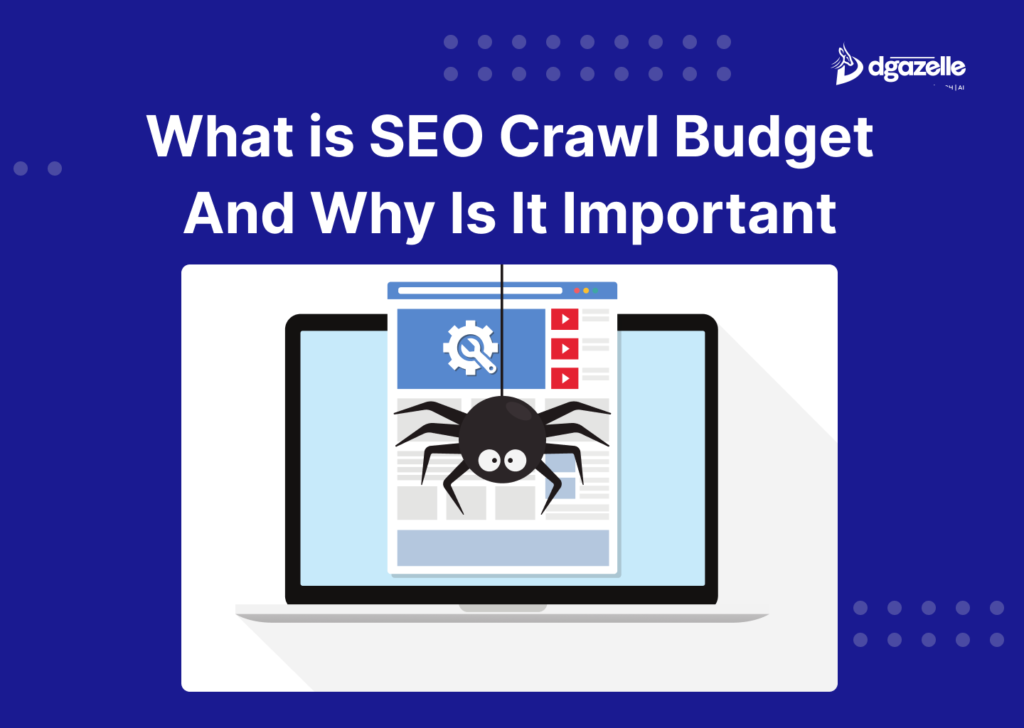
Understanding your website’s SEO crawl budget is crucial, especially for business owners in Nigeria looking to boost their online presence. In simple terms, crawl budget is the number of URLs on your website that search engines like Google will discover and crawl within a specific time frame. Once that quota is met, the search engine moves on to other sites. Here’s the thing: with billions of websites on the internet, search engines have limited resources. They can’t check every single site every day, so they prioritize which pages to crawl and when. This means that if your site isn’t optimized, important pages might not be indexed quickly or at all, potentially impacting your search rankings. For Nigerian businesses, ensuring that search engines efficiently crawl your site can lead to faster discovery of new content and improved visibility in search results. At Dgazelle, we understand the unique challenges and opportunities of the Nigerian market. That’s why our web design services not only focus on creating visually appealing and user-friendly websites but also incorporate best SEO practices. By designing your site with a clear crawl structure and optimized content, we help ensure that search engines find and index your pages effectively—giving your business the competitive edge it needs in the digital space. Before diving into the strategies that search engines use to decide what to crawl, let’s explore why managing your crawl budget is so vital for your site’s overall SEO success. Why is SEO Crawl Budget Important for your website? For your website to rank in Google’s search results, it first needs to be crawled and then indexed. This process allows Google to discover and store data about your pages, ultimately impacting their visibility. If something goes wrong with these processes, your content may never appear in search results. When Google’s web crawlers visit your site, they go through several steps: crawling pages, fetching data, storing it, and sending it back to the index. The efficiency of this process plays a significant role in your search rankings and can directly affect your organic traffic—ultimately impacting your business goals. For most website owners, crawl budget isn’t a major concern because Google is generally efficient at crawling sites. However, there are specific scenarios where understanding crawl budget becomes crucial for SEO performance: For Nigerian business owners, optimizing crawl budget is a way to ensure that your site remains competitive in search results, especially in a fast-growing digital market like Nigeria. At Dgazelle, we specialize in creating websites that not only look great but are technically sound to ensure efficient crawling by search engines. Our web design services focus on resolving potential crawlability issues and structuring your site for optimal performance. This means your content is more likely to rank higher, bringing you more visibility and ultimately driving business growth. By managing crawl budget effectively, you can ensure your content is indexed promptly, which leads to better search engine visibility and more organic traffic—vital for your business’ success in today’s competitive online landscape. How Does Google Determine Crawl Budget? Google determines your website’s crawl budget based on two primary factors: Crawl Demand and Crawl Capacity Limit. Understanding these factors can help Nigerian business owners optimize their site for better SEO performance. Optimize your site’s performance today with Dgazelle! Our expert web design services ensure better crawl efficiency and faster load times. Get in touch now! 1. Crawl Demand Crawl demand is how often Googlebot crawls your site, and it’s influenced by three key elements: 2. Crawl Capacity Limit Crawl capacity refers to how much Googlebot can crawl before your site’s performance is impacted. This is mainly determined by your website’s health and Google’s own crawling limits. For Nigerian business owners, it’s essential to maintain a healthy website to ensure smooth crawling. At Dgazelle, we prioritize website speed, server reliability, and SEO best practices to help ensure your site is easy for Googlebot to crawl, keeping your crawl budget intact. By understanding and managing these two factors, you can ensure that Google crawls your website efficiently, leading to faster indexing and improved SEO performance. This, in turn, can lead to higher search rankings and more organic traffic, helping your business thrive online. Why Should You Care About Crawl Budget? For Nigerian business owners aiming to enhance their online presence, understanding and optimizing crawl budget is essential. Here’s why: You want search engines like Google to find and understand as many of your indexable pages as possible. When you add new content or update existing pages, it’s crucial that search engines pick them up quickly. The sooner they’re indexed, the sooner you can start benefiting from that content through organic search traffic. However, if you’re not managing your crawl budget efficiently, Googlebot may waste time crawling unnecessary pages, leaving your important content undiscovered. If Google doesn’t know about your key pages, they won’t crawl and index them. This results in missed opportunities to attract visitors to those pages through search engines, which can severely impact your business’ SEO performance. Wasting crawl budget hurts your SEO, as search engines may not prioritize your essential pages, affecting your site’s ranking and visibility. But don’t worry—crawl budget management becomes particularly important if you have a large website (e.g., 10,000+ pages). For smaller sites, it’s typically not as big of a concern. Regardless, optimizing your crawl budget is a smart move for businesses of all sizes aiming for strong online visibility. Let Dgazelle help you create a website that’s built for search engines and users. Contact us for a strategy session! Tips for Crawl Budget Optimization Conclusion Regularly optimizing your site’s technical aspects ensures web crawlers can efficiently find your content, which is essential for ranking in search results. By using tools like Semrush’s Site Audit, you can monitor your site’s health and address errors before they impact performance. This proactive approach helps you maximize your crawl budget, improve SEO, and ultimately boost your site’s visibility. Maximize your crawl budget with a high-performance website from Dgazelle. Our team ensures
Orphan Pages Killing Your SEO? Here’s How to Find and Fix Them
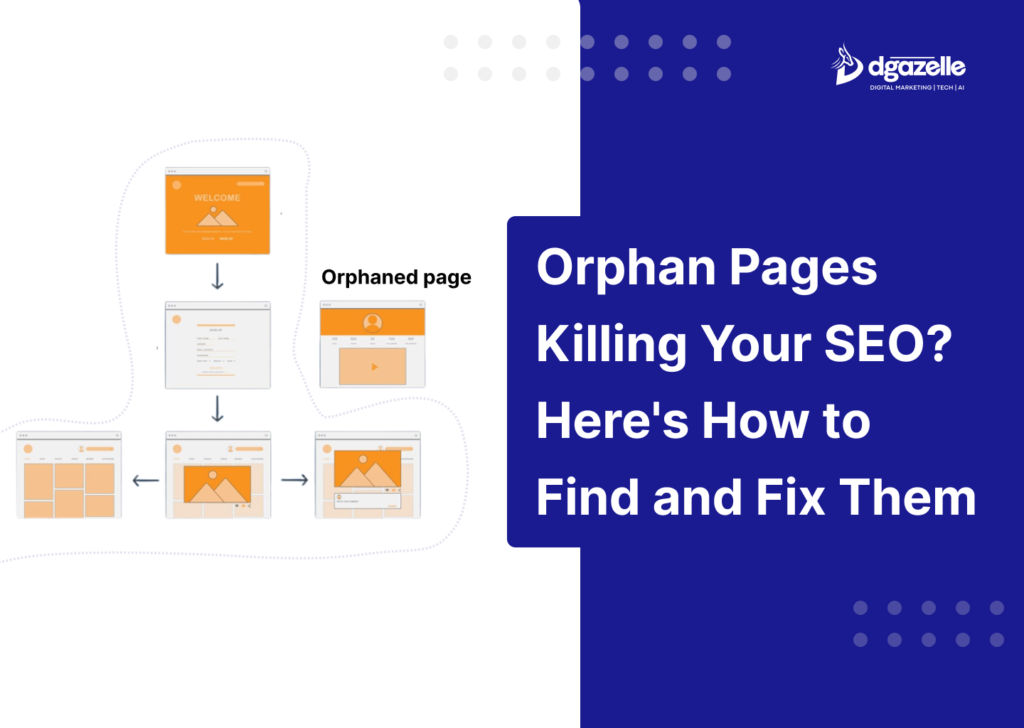
When we talk about orphan pages, we’re referring to web pages that exist on your site but aren’t linked to from any other page. This means users and search engines have a hard time finding them. For Nigerian SME owners, this is crucial because if potential customers can’t discover your best content, you’re missing out on sales and visibility. Orphan pages aren’t necessarily bad for SEO, but they don’t contribute to your site’s overall content strategy. You could have top-notch content on these pages, but without internal links guiding users and search engines to them, they serve little purpose. Sometimes, orphan pages are created intentionally—like landing pages used in paid ads. These pages are usually set up to be hidden from search engines with tags like “noindex, nofollow,” which is perfectly fine. But for your main website, every valuable page should be easy to find and accessible to users and search engines. What Exactly Are Orphan Pages? Orphan pages are web pages on your site that have no internal links pointing to them from any other page—be it your homepage, blog posts, category pages, or navigation menu. This means users and search engines can’t easily discover them. But it goes beyond that. If a page is only linked from other orphan pages, it’s still considered an orphan. For example, if Blog Posts B and C are linked only from Post A, and Post A itself is orphaned, then B and C are also orphans. They’re isolated from the main site structure, making them invisible to search engines and users navigating from your homepage. For Nigerian SMEs, this can be a big problem. Hidden pages mean missed business opportunities, as potential customers won’t find your valuable content or products. When Is It Okay to Have Orphan Pages? Not all orphan pages are bad. In fact, some are intentional. These include: These pages are usually hidden from search engines with “noindex, nofollow” tags and don’t need to be part of your main site structure. As long as this is strategic and intentional, it’s perfectly fine. What Causes Orphan Pages? Orphan pages often occur unintentionally, but they can also be deliberate.Common Causes Include: Intentional Orphan Pages:Some orphan pages are purposefully isolated, like: As long as these are strategic, they’re okay. Just make sure they’re excluded from search engine indexing. Why Are Orphan Pages Bad for SEO? Google and other search engines discover new content by following internal links. If a page is orphaned, search engines won’t find it unless it’s in your sitemap or has backlinks. No Internal Links = No PageRankPageRank is Google’s way of understanding a page’s importance based on the number and quality of links pointing to it. Without internal links, an orphan page can’t receive any “link juice” or PageRank, impacting its SEO performance. For Nigerian SMEs, this means valuable content or product pages could be hidden from potential customers, ultimately affecting your bottom line. How to Find Orphan Pages on Your Website Finding orphan pages requires a thorough approach using multiple tools and methods. Here’s how to get it done: 1. Using SEO Crawling Tools These tools can identify orphan pages even if they’re not linked internally by comparing the site’s crawl data with your sitemap. Combining these tools provides a comprehensive view of orphan pages on your site. 2. Using GA4 and Search Console This approach also helps discover low-performing pages for future content improvement. 3. Manual Site Audit This is the most accurate but time-consuming method. Hiring a dedicated SEO Agency to help keep on top of things like this could also save you time. The experience they have will mean they are always looking out not just for issues with orphan pages, but hundreds of other things that could also be impacting your organic visibility. 4. Backlink Analysis Tools to Use: How to Fix Orphan Pages on Your Website Once you’ve identified the orphan pages, fixing them is straightforward. Here are two effective methods: 1. Adding Internal Links If the orphan page is valuable and relevant: 2. Remove and Redirect If the orphan page is outdated or no longer relevant: Why It Matters: A 301 redirect preserves link equity and ensures users land on a relevant page, maintaining a positive user experience. Conclusion All content on your website should have a purpose for both users and SEO. If a page is orphaned it becomes arguably useless for them both. If you have any other methods you use for finding orphan pages, we’d love to hear them. Boost your online presence and grow your business with Dgazelle’s expert social media and digital marketing services. From creative strategies to tailored campaigns, we’ve got you covered.
Programmatic SEO Made Simple: Transform Your Approach to Search Engine Strategy
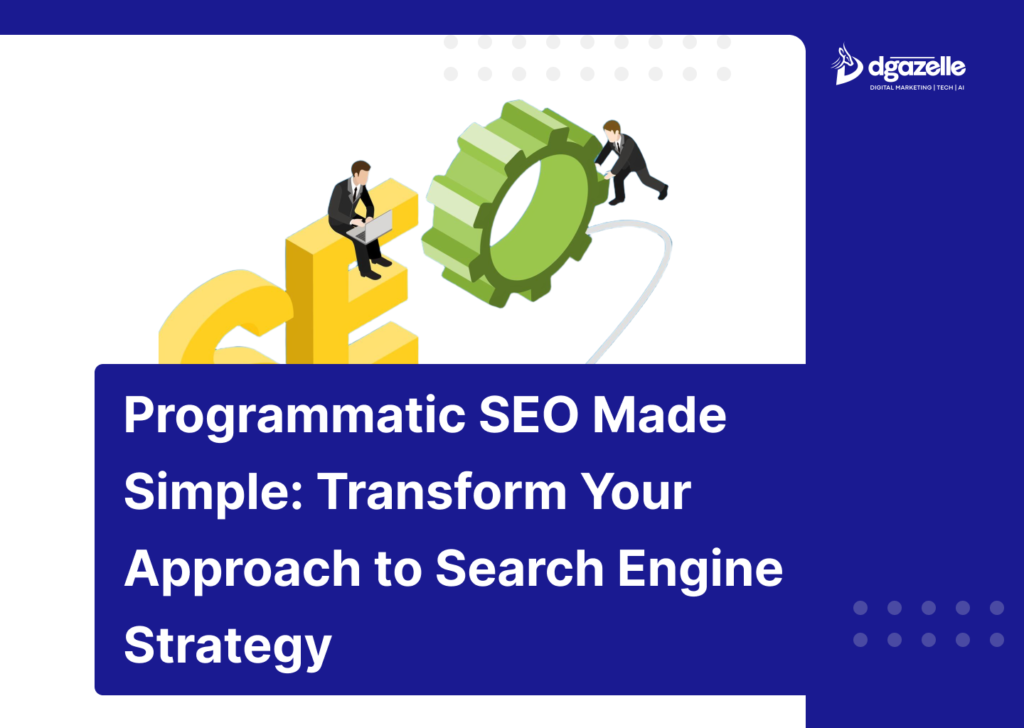
Ever wondered how some websites effortlessly rank for thousands of keywords without a huge content team? That’s the magic of programmatic SEO. With AI increasingly on the rise, automation are game-changers. Programmatic SEO empowers businesses to generate hundreds—even thousands—of optimized pages at scale, saving valuable time while driving significant search visibility. Instead of relying solely on manual tactics, it uses data-driven insights to spot trends, automate optimization, and boost results. But here’s the catch—it’s not for everyone. To unlock its full potential, you need a clear strategy tailored to your business goals. Looking to outsmart your competitors with smarter, scalable SEO tactics? Partner with our digital marketing experts to craft a winning programmatic SEO strategy designed to amplify your search rankings and drive growth. What is Programmatic SEO? Programmatic SEO is an approach to search engine optimization that uses automation to create large numbers of pages, each targeting specific, low-competition keywords. For instance, travel aggregator sites like Expedia effectively use programmatic SEO by generating location-specific pages for flights, hotels, and tourist activities based on structured data. Unlike traditional SEO, where content is manually crafted for each keyword, programmatic SEO relies on templates and automation tools to generate hundreds—or even thousands—of pages at scale. This method is particularly useful for businesses offering a wide range of products, services, or content topics. What’s made programmatic SEO even more accessible today is the rise of AI and automation tools like GPT-4, Frase, and SurferSEO. GPT-4 helps generate detailed base content efficiently, Frase aligns it with user intent to improve engagement, and SurferSEO provides data-driven keyword insights to optimize content performance. When executed with the right data and automation setup, programmatic SEO can drive serious traffic at scale. Summarizing the advantages of automation and data-driven insights, it’s important to acknowledge potential downsides. Programmatic SEO isn’t for everyone. It works best for websites that provide unique, relevant data across a large set of similar keywords. Without quality data and a clear strategy, thin, low-value content can harm your rankings instead of boosting them. To mitigate this risk, prioritize high-quality content by using robust templates, incorporating user-focused information, and maintaining data accuracy. Programmatic SEO vs. Traditional SEO The key difference between programmatic SEO and traditional SEO lies in execution and scalability—both of which have implications for small and medium-sized enterprises (SMEs). Traditional SEO focuses on crafting high-quality, targeted content for individual keywords through meticulous user research, manual content updates, and in-depth optimization. This hands-on approach aims to satisfy search intent for highly specific queries, often requiring significant time and creative resources. On the other hand, programmatic SEO is designed for efficiency and scale. Instead of manually creating pages for each keyword, businesses develop templates and use automation to generate hundreds or even thousands of pages targeting long-tail keywords. This approach works particularly well for SMEs managing diverse product catalogs, service directories, or niche content categories. For example, an SME running an e-commerce store can use programmatic SEO to create dynamic product pages that incorporate essential elements like pricing, customer reviews, and specifications. Similarly, a real estate directory can generate location-specific listings by leveraging structured data. Both approaches hinge on strong keyword research—without it, any SEO effort will falter. However, programmatic SEO requires additional attention to data accuracy and content quality to prevent thin, low-value pages. SMEs adopting this strategy should ensure their content templates provide meaningful user experiences and valuable information. Here’s a refined version of the “Potential Benefits of Programmatic SEO” section optimized for SEO and SME business owners: Benefits of Programmatic SEO One of the most impactful advantages of programmatic SEO is its efficiency. For SMEs with limited time and resources, this approach offers a way to generate a vast number of keyword-focused pages without the heavy cost of manual content creation. Automation allows you to scale up and create hundreds or even thousands of pages quickly, saving valuable time and operational expenses. This approach also helps capture organic traffic that competitors might overlook by targeting low-competition, niche keywords. For example, a local service provider or product-based business can create pages optimized for specific locations or services, expanding their reach and authority across multiple regions. Moreover, programmatic SEO boosts your website’s visibility. By increasing the number of indexed pages, businesses gain more opportunities to appear in search results, attract new customers, and establish their online authority. When executed strategically, it can complement traditional SEO efforts and maximize your site’s organic growth potential. How to Set up Programmatic SEO Now that you’re familiar with programmatic SEO, let’s break down an actionable, step-by-step process to help SMEs efficiently scale their search visibility. With the right approach, this method becomes manageable and highly rewarding. 1. Identify Strategic Keywords Effective programmatic SEO begins with smart keyword research. Identify niche, low-competition long-tail keywords relevant to your industry. Tools like Ubersuggest or SEMrush are valuable for generating keyword lists. For SMEs, focus on terms with high purchase intent or location-based searches, such as “affordable marketing services in [city]” or “best digital tools for [sector].” 2. Create Flexible Page Templates Develop a template for dynamic page creation. Keep it clean and user-friendly, with placeholders for elements like product prices, service descriptions, or city-based content. This template becomes the framework for generating multiple SEO-optimized pages while maintaining consistent branding and functionality. 3. Leverage High-Quality Data Sources Accurate, relevant data elevates your pages. SMEs can use internal databases, publicly available datasets, or carefully vetted external sources to populate dynamic content fields. Ensure your data stays up to date—whether it’s pricing, locations, or service descriptions—to maintain user engagement and search relevance. 4. Automate Page Generation Automation is the heart of programmatic SEO. Use tools like Google Sheets combined with WordPress plugins (e.g., WP All Import) or Webflow to dynamically populate page templates. This process can help SMEs create hundreds of keyword-focused pages quickly, without sacrificing consistency or functionality. 5. Optimize and Improve Continuously Automation doesn’t mean set-and-forget. Regularly review metrics like bounce rate, average time on page, and CTR to identify areas for
Search Everywhere Optimization: Why Traditional SEO Is No Longer Enough
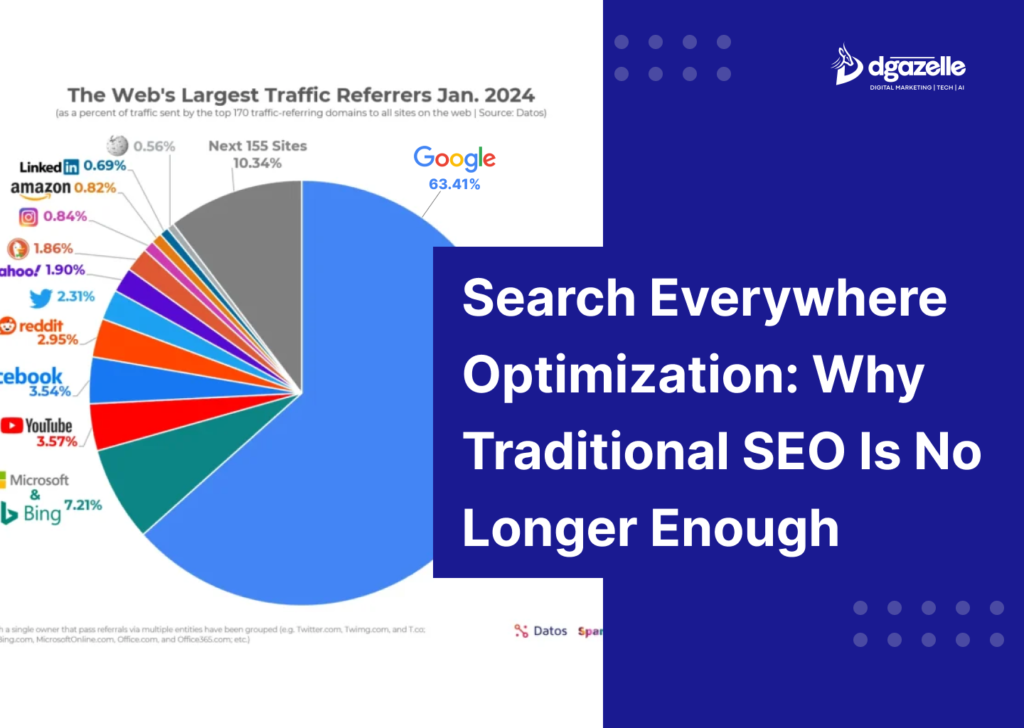
The search space is fracturing. Google, once the king of search engines, is no longer always the first stop for people seeking answers. Increasingly, users are turning to platforms like social media, YouTube, Amazon, and even AI-powered tools like ChatGPT. These platforms have become their own search engines, shifting the way people discover content. For businesses, this means one thing: traditional SEO is no longer enough. Search Engine Optimization needs to evolve beyond Google. To truly succeed, brands must optimize their presence across all digital touchpoints, from social media to video platforms. Welcome to the world of Search Everywhere Optimization. This comprehensive approach helps businesses ensure they’re visible wherever people are searching, across a wide variety of platforms. At Dgazelle Digital, we specialize in building cohesive digital strategies that boost your brand’s reach across these diverse channels. In this article, we’ll dive into why Search Everywhere Optimization is critical for your business, where to focus your efforts, and how to enhance your presence across key platforms. Ready to step up your visibility? Let’s explore!’ What Is Search Everywhere Optimization and Why Your Brand Needs It Now Search Everywhere Optimization is a revolutionary strategy reshaping how brands approach online visibility. At Dgazelle Digital, we’re embracing this holistic approach to ensure our clients are discoverable across the digital ecosystem — not just on Google, but on social media, video platforms, eCommerce sites, and AI-driven tools. Why does this matter? The way people search has evolved. They’re seeking recommendations on Instagram, tutorials on YouTube, products on Amazon, and quick answers from AI assistants. Limiting your optimization to one platform leaves you invisible where potential customers are actively searching. Here’s what Search Everywhere Optimization can do for your business: At Dgazelle Digital, we combine website design, social media management, digital marketing, branding, and business consultation to execute search everywhere optimization strategies. Let us help you build a resilient, multi-platform presence that turns searches into conversions. My Experience: Discovering Restaurants on Instagram When searching for restaurants, I find Instagram far more useful than Google. Let me share a quick story. The last time I wanted a good place to eat in Lagos, I didn’t even think of using Google. I went straight to Instagram and searched for #LagosFood. Instantly, my feed was filled with beautiful, mouth-watering images from all kinds of restaurants in the city. What makes Instagram better? These aren’t promotional pictures from restaurants. They’re real photos taken by foodies, bloggers, and regular people who’ve actually eaten there. You see the food exactly how it looks when served, not just polished menu shots. Even better, posts often include location tags and comments filled with reviews, making it easy to decide where to go. Thanks to Instagram, I found a fantastic spot, and the experience didn’t disappoint. This is why brands must optimize their social media presence — it’s where customers are searching today! The Power of Reviews and Community Engagement One thing I love about social media searches is the community vibe. On Google, reviews often feel impersonal — just blocks of text from people you don’t know. Platforms like Instagram and TikTok offer something richer: authentic reviews from real people sharing personal experiences. Even better, these reviews spark engagement in the comments. For instance, a foodie might post about a restaurant, and followers will share their own tips or ask questions. The original poster often responds, creating a mini-community of food lovers helping each other out. On TikTok, this engagement is even more dynamic. Videos are filled with comments, suggestions, and shared experiences — a far more interactive way to find recommendations. It’s no longer just about finding information; it’s about connecting with a like-minded community. Brands that foster engagement on social platforms can build trust and loyalty like never before. What This Means for Brands: Adapting to the New SEO The shift to search everywhere optimization is a wake-up call for brands. Google SEO alone won’t cut it anymore. Today’s customers search across multiple platforms — from Instagram to TikTok to AI. If your business isn’t showing up there, you’re invisible to your audience. Here’s how your brands can adapt to the change: 1. Create Engaging Visual ContentDon’t just focus on aesthetics — create purpose-driven visuals that resonate with your audience. High-quality videos, reels, and carousel posts can boost engagement and amplify your reach on social platforms. We can help you craft attention-grabbing visuals that align with your brand identity and message. 2. Leverage Hashtags and Geotags StrategicallyHashtags and geotags increase discoverability. Research trending hashtags your audience follows and add location tags to boost visibility for local searches. Dgazelle Digital helps brands unlock this potential with tailored social media strategies for maximum impact. 3. Collaborate with InfluencersInfluencers already have established, loyal communities that trust their opinions. By partnering with influencers, brands can gain authentic endorsements that feel more personal and relatable than traditional ads. The key is choosing influencers whose values and audience align with your brand’s mission to foster genuine connections and drive long-term engagement. 4. Encourage and Amplify User-Generated Content (UGC)User-generated content is a powerful tool for building credibility. When customers share their experiences, it feels authentic and trustworthy, often encouraging others to follow suit. Brands can motivate UGC through campaigns, contests, and active engagement with their audience’s content. Dgazelle Digital can help you strategically launch UGC initiatives, turning your customers into advocates and boosting your visibility across social platforms. Overcoming Search Everywhere Optimization Challenges While Search Everywhere Optimization sounds promising, implementing it comes with challenges. Here’s how to tackle them head-on: 1. Limited Resources Most businesses can’t afford to optimize their presence across every platform at once.Solution: Prioritize platforms your audience frequents. Analyze website traffic sources and focus your efforts where they’ll make the biggest impact. Gradually expand as your resources grow. 2. Changing Algorithms Social platforms constantly update their algorithms, making it hard to stay relevant.Solution: Stay adaptable. At Dgazelle Digital, we monitor platform changes, ensuring our clients’ strategies remain effective across all channels. 3. Balancing Platform-Specific
The Risk of SEO Over-Optimization in Website and How to Avoid it
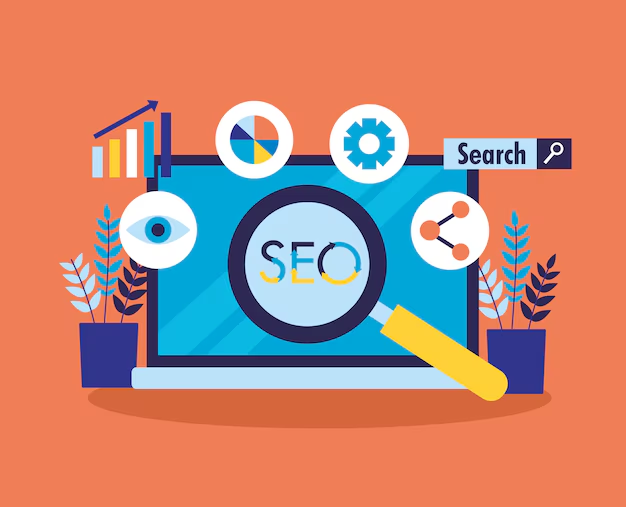
Search engine optimization (SEO) is a powerful tool for increasing visibility and ensuring that your content, products, or services reach the right audience. When done correctly, it enhances your website’s ranking on search engines, helping potential customers discover your offerings. However, just like with anything, it’s possible to go too far with SEO—leading to what’s known as SEO over-optimization. Google has pointed out that while SEO is beneficial, there are limits. Over-optimizing a website can lead to penalties, diminishing its performance rather than improving it. Over-optimization occurs when excessive SEO tactics are applied to a website, making it harder for search engines to recognize and rank the page effectively. The result? What started as good practice can actually hurt your rankings. What Is Over-Optimization? Over-optimization in SEO occurs when you go beyond the necessary practices to push your website to the top of search results. This often happens when you overuse keywords, excessively link to the same phrases, or engage in tactics designed solely to manipulate search engine algorithms. While SEO is important for visibility, Google and other search engines penalize over-optimization because it can negatively impact the user experience (UX). A website that’s overly optimized may feel unnatural or stuffed with keywords, making it harder for visitors to navigate or engage with. This can lead to lower rankings or, in extreme cases, removal from search results altogether. Instead of focusing solely on search engines, it’s essential to create quality content that resonates with users and uses keywords and links naturally. By prioritizing human readers over bots, you can build a website that’s both search-friendly and user-centric. Why Is Over-Optimizing Bad for SEO? Over-optimizing can cause significant SEO issues because search engines may view it as an attempt to manipulate rankings, rather than offering genuine, valuable content. Search engines prioritize high-quality content that provides real value to users. If over-optimization leads to low-quality content that doesn’t meet users’ needs, it creates a poor experience. No one wants to click on a link only to find irrelevant or poorly-written content. This not only frustrates users but also undermines the credibility of search engines. Tactics like keyword stuffing or excessive link building violate Google’s spam policies and can result in penalties, manual actions, or even a drop in rankings. To avoid these risks, focus on creating content that is valuable, relevant, and user-friendly, rather than trying to game the system with excessive SEO tactics. Common Over-Optimization Practices to Avoid Understanding SEO best practices is crucial to avoid over-optimization. Here are some key pitfalls: De-Optimizing Content De-optimizing content is about identifying and fixing over-optimization issues to enhance both SEO and user experience. Begin by reviewing your content for overused or forced keywords, excessive anchor text optimization, and duplicate content. You can do this manually by carefully reading and comparing your content, or use a tool like Semrush On Page SEO Checker to analyze your site’s content. The On Page SEO Checker, among other metrics, automatically calculates your content’s keyword density (the ratio of keywords to total word count) and compares it to that of your top 10 competitors. Best Practices for SEO Optimization Conclusion In conclusion, successful SEO optimization involves striking the right balance between appealing to search engines and providing an excellent user experience. Over-optimization, where too much focus is placed on technical SEO, can make your site feel forced and lose sight of the bigger picture. While technical SEO is essential, the real impact comes from creating high-quality, engaging content that naturally integrates relevant keywords. At Dgazelle, we specialize in delivering tailored SEO strategies that improve your rankings and boost user experience. Contact us today to get started on enhancing your SEO with expert analysis, content optimization, and technical solutions that drive results!
URL Slug, what it is and why it is essential for SEO + how to optimize it

If your SEO efforts aren’t yielding results, the culprit could be poorly optimized URL slugs. They’re small yet mighty tools that can directly affect your rankings. Let’s explore their importance and learn actionable tips for creating SEO-friendly URL slugs that boost visibility. What is URL Slug A slug is a key component of any webpage URL. It’s the portion that identifies a unique page on your site and appears immediately after the domain name, following a slash. Think of it as the digital “name tag” for your pages, helping search engines and users understand what to expect on the page. URL slugs should be easy to read and accurately describe the content. They come after the directory and before any additional parameters or fragments, remaining dynamic for each unique page while other URL parts, like the domain name, stay consistent. An SEO-friendly URL is designed to provide clarity and context to both search engines and users, helping them understand what a page is about at a glance. These URLs are typically concise, descriptive, and include relevant keywords that reflect the content of the page. The URL slug is the backbone of an SEO-friendly URL. It serves as a clear signal to users and search engines, setting expectations about the page’s content. A good slug is short, easy to read, and provides a precise indication of what visitors will find when they click through. By optimizing your URL slugs, you create pathways that enhance visibility and improve user experience. Why Is a URL Slug Important for SEO? URL slugs may not directly impact rankings, but they significantly influence user behavior and overall experience. A well-crafted slug signals relevance in the search engine results page (SERP) snippet, helping users decide whether your page matches their search intent. Messy, unclear slugs can confuse visitors and make your site seem less trustworthy. Conversely, a clean, descriptive slug builds trust and encourages clicks. Including target keywords in your slug can subtly enhance relevance, even if it’s a lightweight ranking factor, as noted by Google’s John Mueller. In essence, while URL slugs may not dominate search rankings, they bridge user experience and SEO. Crafting user-focused slugs improves navigation, builds confidence, and could boost click-through rates—making them a critical, though understated, part of an effective SEO strategy. Optimizing URL Slug Make them readable. It’s crucial that URL slugs are easy to read and comprehend because they should immediately convey the content of the page. This entails avoiding superfluous characters like numbers or symbols and keeping it brief and direct. A URL slug like contact, for instance, makes it obvious that this is the page to visit in order to find contact details. This is not only simple to read, but it also has the added advantage of being simple to remember, allowing users to return to it at a later time. Keep it brief. It is impossible to have the ideal slug length. Although there are some rules to follow, there is no set amount of characters you should utilize. In general, shorter is preferable. Short URLs are preferred by Google, and if two pages have the same metrics, the shorter one will rank better. The tie-breaking criterion is URL length. Shorter URLs appear more appealing on search engine results pages (SERPs) and are easier for both visitors and search engines to grasp. But remember that descriptive URL slugs are still important. It doesn’t have to be the full length of the title, but it shouldn’t be so brief that the searcher can’t understand the purpose of the page. As previously said, concentrate on choosing keywords that accurately represent the content of the website. It is also possible to abbreviate the slug without sacrificing context by eliminating superfluous stop-words such as a, and, or the. This aids in readability as well. Remove dates and numerals to make it future-proof. It becomes challenging to reuse the page later if you wish to update the content because URL slugs contain numbers and dates. A slug like /10-SEO-tips-in-2016/, for instance, restricts the page’s content to those predetermined characteristics. You will either need to utilize a redirect to a more recent version of the page or allow the material to appear out of date if you wish to add more SEO tips, such as 23 tips for 2022, or if you want to make it more current, such as SEO recommendations for 2022. In any case, it’s preferable to stay away from numbers and dates because it’s not the best scenario. Use just lowercase letters. It is usual practice to use only lower-case URL slugs to prevent duplicate content concerns and 404 errors because everything after the domain can be case-sensitive. Making it as simple as possible for users to change URLs in their browser’s address bar will help you reduce the likelihood that people will create inaccurate connections to your pages. Use hyphens. For clear, legible URL slugs, use hyphens (-) to separate words. Hyphens are an exception and have established standard practice in this specific use-case, even if you should limit the use of other characters and symbols. Additionally, Google suggests using this punctuation. Resources for Improving Your URL Slugs You can identify problems with your URL slugs and optimize them with the following three tools: Yoast SEO Yoast SEO is a well-known WordPress plugin that aids with search engine optimization. It offers modification and optimization options for URL slugs right in the post editor. Thus, there is no need for you to code. This is a really simple method to make sure your URL slugs are optimized from the time you press publish if your website is WordPress-powered. However, you can utilize the tool for your Shopify website as well. Semrush The Site Audit tool from Semrush examines the functionality and health of your website. Additionally, it examines how well your URL slugs are optimized as part of its assessment. Semrush checks your website for problems such as: An excessively lengthy URL, Incorrect formats for the URL

